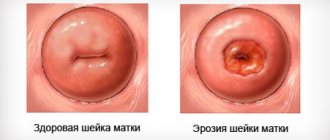Everyone knows about the beneficial properties of honey. There are many articles devoted to this product. It is difficult to find a disease that cannot be treated with honey. The value of honey lies in its unique composition. No other product contains such a large amount of biologically active substances, vitamins and amino acids.
Honey can also be used to treat gynecological diseases. Its beneficial effect is based on improving blood circulation in the pelvic organs. The most convenient way to use honey is to apply it to tampons. The product itself does not have a negative effect on the body. There are almost no side effects from its use. Honey was introduced into the vagina back in the days when most of the drugs used today did not exist.
Benefit
For doctors, the anti-inflammatory, restorative, and immunomodulatory properties of honey are useful. Some women give their preference to treatment not with medications, but with the means offered by traditional medicine; honey is especially often in demand. A few may claim that after a course of treatment with honey they did not feel any improvement.
There are many varieties of honey. Linden honey is best suited for the treatment of gynecological diseases. Unlike some medications, the sweet mass does not irritate the vaginal mucosa. In addition to tampons with honey, honey suppositories are also used for treatment.
The sweet product can be used for douching; for this, a special solution is prepared, consisting of one part honey and three parts water. It is recommended to take honey internally in order to increase immunity and this can be done in parallel with the introduction of tampons and douching.
In gynecology, honey can be used to treat inflammatory processes in the vagina and uterus. Thrush responds very well to treatment in this way. You can treat ovarian cysts and cervical erosion with honey. It is believed that the sweet product can slow down menopausal changes in the reproductive system.
Honey is suggested to be used to treat infertility. Many women who have been unable to conceive a child for a long time claim that using tampons with honey helped them achieve a positive result.
On the one hand, such a statement may seem fantastic. But if we think logically, then very often a woman fails to get pregnant due to disturbances in the functioning of the ovaries. Suppositories and honey tampons help correct this situation. Especially if the problem with conception arose due to inflammatory processes in the ovaries, uterus or fallopian tubes.
Doctors say that honey is able to restore the acidic environment in the vagina, and thus the mucous membrane is healed and the microflora is renewed, since an environment favorable for the growth of lactobacilli is created anew.
Honey restores the immune system and removes harmful substances from the body. Thus, the body is able to more actively fight pathogenic microorganisms, suppressing their growth and development. Honey can also increase blood flow in the pelvic area.
Nutrition of the uterus and ovaries is enhanced and thus the functioning of the entire reproductive system is normalized. By using honey to treat gynecological diseases, you can achieve rapid positive changes in the reproductive system without disrupting the functioning of other organs and systems, as happens when using hormonal drugs.
Tampons
Tampons with chalk are not sold in pharmacies, so the patient will have to make them herself. There are no particular difficulties in production. To create a simple tampon, you will need honey and sterile gauze.
The honey is laid out on gauze and rolled into a tight roll. In another method, sterile cotton wool is simply dipped into water in which honey is diluted, then gauze is placed in the vagina.
Since honey is a natural product that loses its properties over time, tampons must be made immediately before use. It is very important to use a high quality product for treatment. Old, sugared honey is not suitable for treatment.
Source: MenCikl.ru
To achieve the desired effect, you need to place a tampon in the vagina for several hours at once, so it is more convenient to treat in the evening before bed. Tampons must be inserted every other day. The tampon should be in the vagina for no more than four hours.
For greater effectiveness, it is recommended to alternate the placement of tampons with lubricating the vagina with an alcohol solution of propolis. The alcohol solution must be diluted with water so as not to burn the vaginal mucosa.
This treatment regimen is recommended for the treatment of inflammatory processes in the vagina, as well as the uterus. The course of treatment with honey usually takes about two weeks. This is exactly how long it takes to eliminate all the symptoms of inflammation.
If for some reason the treatment needs to be extended, then you do not have to worry about negative reactions due to an overdose, as is the case with medications.
With solution
In order to make tampons with honey water, you need to take honey and water in a ratio of one to two. After the honey has dissolved, sterile gauze is dipped into the solution. Such tampons can be used for a longer period of time compared to tampons containing only honey. In this case, the tampon can remain in the vagina for up to twelve hours.
This treatment can be done every day. Cervical erosion is well treated with honey solution. These tampons can also be used to stop inflammatory processes in the uterus and vagina. The effectiveness of tampons with honey solution is no lower than that of tampons with pure honey, and the course of treatment in this case also does not exceed two weeks.
The first results will become noticeable after a week of regular use of tampons. Additionally, you can add chamomile infusion to the honey solution. To do this, chamomile flowers are brewed with boiling water in the usual way, and the resulting decoction is carefully filtered and added in a small amount to a ready-made solution of water and honey. Thrush can be treated in this way.
General information about the treatment of uterine fibroids with folk remedies
The frequency of detection of benign neoplasms (fibroids) of the uterus has increased in recent years. According to medical statistics, pathology is detected in every 3 women over the age of 45 years. The progression of the disease is associated with hormonal fluctuations. Menopausal changes, natural for the female body, do not pass without leaving a trace and become the basis for the development of various diseases.
Treatment of uterine fibroids with honey and other folk remedies is effective when the neoplasm is small in size and the gynecologist does not notice its development trends. In cases where the tumor has significant parameters, it is better to abandon such treatment methods. To remove a large tumor, surgery is required, and folk remedies are used as auxiliary techniques, together with medications to ensure recovery.
Attention! Many women consider folk recipes as proven remedies with a centuries-old history of effectiveness, but this is not so. The use of such compounds often leads to rapid progression of the disease and a worsening prognosis for recovery.
The opinion of gynecologists on the issue of the possibility of using non-traditional methods of therapy comes down to one thing: it is possible to use folk remedies, but subject to the provision of complete therapy with medications. In this case, herbs and other components of the mixture will help enhance the effectiveness of the medicines, which will speed up recovery.
Recipes
Among the recipes offered by specialists in the field of traditional medicine, there is a remedy that can quickly eliminate all symptoms of inflammation in the vagina. To prepare this product, you will need an ordinary onion, which must be baked in the oven before use.
A hole is first cut in the bulb where the honey is placed. The finished onion is wrapped in sterile gauze and thus a tampon is obtained that combines the beneficial properties of both honey and onion. Therefore, the therapeutic effect of the procedure doubles.
Honey candles are made with the addition of egg yolk. One yolk is mixed with a teaspoon of honey and rye flour is added until a mass is obtained with a consistency close to plasticine. From the resulting material they fashion a familiar candle, the shape of which resembles a pharmacy one.
The length of such a candle should not exceed three centimeters. After everything is ready, the product must be placed in the refrigerator. Suppositories can be inserted into the vagina up to two times a day. Before the procedure, it is necessary to empty the intestines of feces so that the suppository can be conveniently inserted into the vagina. This remedy allows you to get rid of ovarian cysts. The course of treatment is one month. Then a week break is taken and further treatment is carried out.
Tampons with aloe and honey are also widely used in the treatment of gynecological diseases. Before use, the aloe leaf must be washed well and the peel removed, since only the pulp from the leaves is used to make tampons.
Honey is mixed with aloe to obtain a paste. Both components of the drug are taken in equal proportions. The mixture is laid out on gauze, which is rolled into a neat, tight tampon. The course of treatment in this case will take about ten days.
Please note that aloe can cause an allergic reaction. If, after using a candle, severe itching and burning appears, you should discard aloe leaves and use candles containing only honey. This remedy is most effective in the treatment of vaginitis. It is recommended to administer suppositories for several hours before bedtime.
Another interesting recipe is proposed to be used for menstrual irregularities. In this case, aloe is also used. To prepare the remedy, take aloe juice, squeezed from well-washed leaves of the plant. In total you will need about 200 ml. juice, then you need honey in the amount of 600 g. and Cahors is taken in the same volume. The recipe calls for three tablespoons of snake knotweed powder, made from snake knotweed.
A mixture of all the above products is boiled over low heat for an hour in a water bath. Next, the resulting product is taken one tablespoon, thirty minutes before meals, three times a day. The same remedy will help fight toxicosis during pregnancy.
It is recommended to treat cervical erosions during pregnancy with the help of honey. In this case, there is no risk of harm to both the fetus and the mother. The only condition is to maintain cleanliness. Bacteria must not be allowed to enter the vagina and cause inflammation of the mucous membrane.
Specifics of propolis
Honey and propolis, when combined, have a double healing effect. In alternative medicine, propolis ointment is used in a concentration of ten to fifteen percent, an alcohol infusion, individual pieces of propolis, and a mixture with butter. Thanks to their use, fungal and trichomonas inflammations, erosions, adnexitis, fibroids and cystitis are treated.
The external genitalia must be washed before each session. A tampon with propolis is treated with ointment, mixed with an aqueous-alcohol solution and oil, and injected orally. An alternative is a piece of propolis wrapped in gauze. This remedy is used before bedtime, the course duration is at least ten days.
You can also use tampons with onions and honey in gynecology.
Contraindications
Not everyone is allowed to be treated with honey. In some patients, the introduction of honey into the vagina causes dysbiosis. In this case, the patient experiences itching and irritation, the vaginal mucosa swells, and pathogenic bacteria begin to multiply rapidly. With such symptoms, there is no point in continuing treatment.
Honey and other bee products are strong allergens for some of the population. In this case, treatment with honey can cause serious complications, ranging from urticaria to angioedema.
Moreover, allergies can manifest themselves both immediately and after several sessions of inserting tampons. Therefore, when starting treatment, you need to pay attention to your well-being. If there are no changes in the condition of the body, you can continue treatment.










